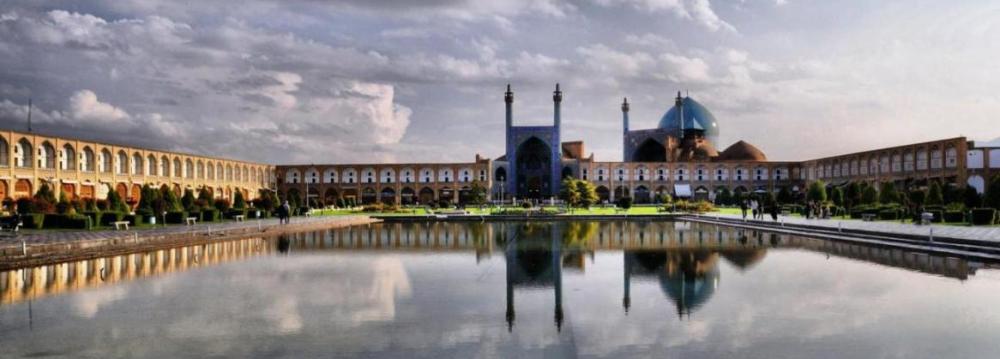On Tuesday, Iran and six world powers brought an end to a 12-year nuclear standoff that saw Iranians endure grueling economic sanctions imposed by the West. The comprehensive nuclear agreement ensures the lifting of crippling sanctions once Iran’s compliance with the agreement is confirmed.
When a framework deal was reached in April, tourism authorities began musing about the positive impacts of a comprehensive nuclear accord.
“We are ready for a massive tourist influx,” Masoud Soltanifar, head of Iran’s Cultural Heritage, Handicrafts and Tourism Organization, said at the time.
That is all fine and dandy, but are we prepared?
Diplomacy Does Good to Tourism
The rapid decline in the number of incoming tourists in the past few years was largely blamed on Iran’s international isolation brought about by the sanctions, but domestic factors also played their part.
Lack of funding to develop infrastructure and years of mismanagement cost Iran millions, maybe billions, of dollars in tourism revenue.
Nevertheless, more foreign tourists have started making the trip to Iran in the past two years and that is largely because of the current government’s foreign policy.
Since taking office two years ago, President Hassan Rouhani and his Cabinet began to shed stereotypes diplomatically and fight the western media’s smear campaign against Iran, which helped boost the country’s global profile.
Foreign tourists traveling to Iran for the first time are pleasantly surprised to find that the country has no semblance to the unpleasant image portrayed by the western media.
We Have a Deal. Now What?
Measures have been taken to promote Iran’s tourism potential abroad in the hopes of attracting more tourists, in line with the country’s 20-year plan, which envisages 20 million annual tourists by 2025, theoretically generating $30 billion in revenues.
ICHHTO has set up tourist information offices in eight countries and they plan on opening 17 more by the end of the current Iranian year (March 19, 2016). These offices are tasked with introducing Iran’s attractions to potential tourists and provide feedback to Iran’s tourism officials.
In order to target the right foreign market, the organization has compiled a list of 40 countries, ranked according to indices such as per capita income and level of economic and political ties with Iran.
In an effort to bring the public and private sectors closer after years of strained relations, Ali Baqer Nemati, the promotion and marketing deputy at ICHHTO’s Tourism Department, said these measures have been taken to enhance cooperation. He said the organization will support the private sector to participate in international exhibitions held in target countries.
In addition to facilitating visa issuance and visa waivers, setting up direct international flights to major cities, the latest of which is the Tehran-Athens flight scheduled for July 23, will help promote tourism.
Clearly, tourism authorities are committed to attracting large numbers of foreign travelers to Iran. But the country is not ready to accommodate such a massive tourist influx.
What Infrastructure?
Lack of adequate numbers of good quality lodging facilities, conflicts between ICHHTO and the private sector and red tape involved in foreign investment must all be addressed if we are to meet the demand of tourists.
There are 50 hotel construction projects currently underway in the Tehran, while president of Tehran Hotels Association, Ali Farrokhmehr, believes another 50 hotels should be built in the Iranian capital.
If Tehran, a city hardly known for its tourism potential, lacks 100 hotels, one can realize the state of hospitality industry in tourist hubs such as Shiraz, Isfahan and Mashhad. The latter reportedly receives a third of all inbound tourists, as it houses the shrine of Imam Reza (PBUH), the descendant of Prophet Muhammad (PBUH).
The lack of lodging facilities has long been touted as a major factor hampering Iran’s efforts to become a top tourist destination, and those involved in the industry have consistently called for easing regulations to attract foreign investors.
The Financial Times earlier this month reported that major international hoteliers are closely monitoring Iran and waiting for the right opportunity to enter the primed Iranian market. However, as long as bureaucratic hurdles in the way of acquiring permits from ICHHTO remain, private investors—domestic or foreign—will opt against investing.
Slow Pace, Long Way
Iran has the potential to become a major international destination. Aside from hospitable people, the country is blessed with an abundance of cultural and historical sites, accessible transportation and natural landscapes.
Iran boasts 19 UNESCO-listed sites, after the historical city of Susa and the ancient Meymand Village were added to the country’s growing list of world heritage sites.
The UN World Tourism Organization predicts Iran will experience a 6.6-percent tourism growth in 2015, and the most recent tourism report by the World Economic Forum labeled Iran “the most affordable country to visit”.
However, this growth will not materialize, if the infrastructure is not developed. While it is true that measures are being taken to build hotels and bridge the gap between the public and private sectors, the pace of such a development is too slow to meet the country’s ambitious tourism goals by 2025.
The floodgates are opening and we are not prepared.



